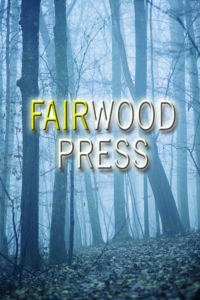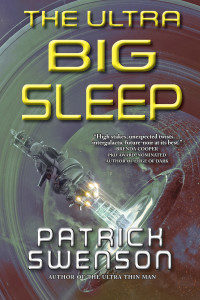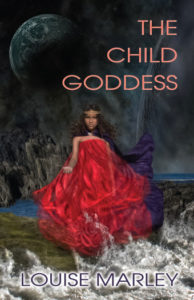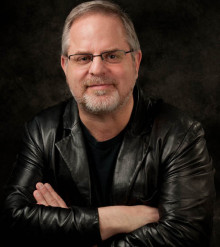An interview with Patrick Swenson, publisher of Fairwood Press.
A small press can have a huge impact in the writing community. Fairwood Press, for example publishes highly recommended non fiction such as The 10% Solution by Ken Rand which has helped countless writers improve their craft. Then, there are novels and anthologies which are destined to be classics. Notably, but not exclusively, at Fairwood Press are authors I admire such as James Van Pelt, Louise Marley, Michael Bishop, Brenda Cooper, and many more. Whether you decide to publish with a small press or a large press, there are differences to be aware of. Patrick Swenson, owner of Fairwood Press, has been published by both and so I asked him about his experiences.
 What motivated you to start Fairwood Press?
What motivated you to start Fairwood Press?
At first, Fairwood Press was created as an umbrella business name for Talebones Magazine to be under in case I ever decided to go into book publishing later. That was 1995. I actually started the book company as an S-Corp in 2000, prompted by author Patrick O’Leary’s query about doing a collection of his work. I’d published his first short story, and one other a little later, and he already had a few novels out from Tor. I said “Yes!” And then: “Let me figure out how to do that and get back to you.” And off we went.
What about distribution and marketing, how do you compete with the big firms?
The truth is, I can’t compete with the big firms. I have distribution through Ingram, but so do most small presses (and self-publishers), and then some with Baker & Taylor as well as a number of library wholesalers. But my books are not returnable, unless ordered directly from me for special events, so big chain stores won’t carry them. As for marketing, I do my best to get the word out. I print advance reading copies (ARCs) for all my titles and get them to potential blurbers and reviewers. I do what I can on social media. I lean on my authors to do what they can too. With a full time teaching job, I do what I can, which is not enough, but better than nothing.
 You’ve had work published with a big press (Tor) and you’ve been published by a small press. Can you talk about some of the differences between working with a large and a small press?
You’ve had work published with a big press (Tor) and you’ve been published by a small press. Can you talk about some of the differences between working with a large and a small press?
Low overhead! Several thousand hardcovers sold for Tor is not a success, but for a small press (like Fairwood), I’d be in the money in a big way. Naturally, the big publishers are established and have long-time working editors and publishers on board who know their stuff, as well as the business side of things, and doing things at a grander scale.
 But a small press doesn’t mean lower quality. You currently have a Hugo Award finalist Traveler of Worlds: Conversations with Robert Silverberg, by Alvaro Zinos-Amaro. To name a few more, you publish work by Jay Lake (winner of the 2004 John W. Campbell Award and Hugo and Nebula nominee) ; James Van Pelt, a nominee for the John W. Campbell Award for Best New Writer and Nebula Award; Daryl Gregory, winner of the World Fantasy Award. And you have others.
But a small press doesn’t mean lower quality. You currently have a Hugo Award finalist Traveler of Worlds: Conversations with Robert Silverberg, by Alvaro Zinos-Amaro. To name a few more, you publish work by Jay Lake (winner of the 2004 John W. Campbell Award and Hugo and Nebula nominee) ; James Van Pelt, a nominee for the John W. Campbell Award for Best New Writer and Nebula Award; Daryl Gregory, winner of the World Fantasy Award. And you have others.
I only do 6-7 books a year. Naturally, I need to get the best books I can for those projects, so I’m pushing to get works from the best writers I can. I pick my own projects. I can afford to be picky! A lot of Fairwood books are collections, so the editing process is obviously different for those. Most stories in the collection have already been published, and edited. I’m there to make sure there are no nagging erorrs left, or that creep in during the edit or layout process.
If anyone is thinking of starting their own small press, what advice would you give them?
I’m thinking of a smart-alec answer like: Go climb a mountain instead! Or: Don’t do it! They say the best way to make a small fortune in the publishing business is to start with a large fortune. But that being said, it’s a labor of love, and I’ve enjoyed almost every minute running almost every aspect of my press. My best advice would be:
(1) start small and grow very gradually (I did one book a year for the first two years before upping it to 3, and so on);
(2) be professional and respectful to writers, artists, staff, and volunteers (easy for me to say, I’m a one-man operation); and
(3) understand how to design a book and put out a professional-looking product.
Anyone with a computer and a WiFi signal can publish a book today. I was very much self-taught over a span of many years. Most people don’t have that kind of time these days. So hire trained designers or personally take classes. I see covers that writers post on social media, and they say, “Look, my new cover! Isn’t it wonderful?” And it’s just hideous.
6) Do you have any advice for writers who are considering publishing with a small press?
Honestly, see (2) and (3) above in the previous answer. Make sure the press holds these ideals as sacred. Check their website. Check their published books and book covers. Check the rights they take and don’t take.
 You’ve grown over the years and have over 70 titles by authors such as Nina Kiriki Hoffman, Michael Bishop, Brenda Cooper, J.A. Pitts, Mark Teppo, Laura Anne Gilman, Daryl Gregory, Jay Lake, Ken Scholes, Jack Skillingstead, Louise Marley, William F. Nolan, Devon Monk, Caroline M. Yoachim, Tina Connolly, James Van Pelt, Alexei Panshin, Mary Rosenblum, and others! What do you feel are the greatest benefits a small press can have for writers and why you have such a stellar and loyal group of authors?
You’ve grown over the years and have over 70 titles by authors such as Nina Kiriki Hoffman, Michael Bishop, Brenda Cooper, J.A. Pitts, Mark Teppo, Laura Anne Gilman, Daryl Gregory, Jay Lake, Ken Scholes, Jack Skillingstead, Louise Marley, William F. Nolan, Devon Monk, Caroline M. Yoachim, Tina Connolly, James Van Pelt, Alexei Panshin, Mary Rosenblum, and others! What do you feel are the greatest benefits a small press can have for writers and why you have such a stellar and loyal group of authors?
One benefit is the freedom to go back and forth with my writers about all things. That includes layout, cover, and design. They get more of my attention from me than a big press editor has time to give. Another is low overhead. If a book from Fairwood does fairly well, that book is going to earn out and start earning some money fairly quickly. Even a book that doesn’t sell well can still stay in the black.
I’d say for the first 10 years of the press, a good 95% of my author list were alums from Talebones magazine. I liked their writing. I’d go to them and ask, “Hey, what do you have? Got a collection? Novel?” Talebones has been gone now for eight years, but the word got out. I have a wider variety of author now, not just Talebones writers.
 Patrick Swenson’s newest novel is The Ultra Big Sleep (August 2016), a sequel to first novel The Ultra Thin Man, which appeared from Tor in August 2014. He edited the small press magazine Talebones magazine for 14 years, and still runs Fairwood Press, a book line, which began in 2000. A graduate of Clarion West, he has sold stories to the anthology Like Water for Quarks, and magazines such as Marion Zimmer Bradley’s Fantasy Magazine, Figment, and others. He runs the Rainforest Writers Village retreat every spring at Lake Quinault, Washington. Patrick, a high school teacher for 30 years, has a Masters Degree in Education, teaches in Auburn, Washington, and lives in Bonney Lake, Washington with his son Orion.
Patrick Swenson’s newest novel is The Ultra Big Sleep (August 2016), a sequel to first novel The Ultra Thin Man, which appeared from Tor in August 2014. He edited the small press magazine Talebones magazine for 14 years, and still runs Fairwood Press, a book line, which began in 2000. A graduate of Clarion West, he has sold stories to the anthology Like Water for Quarks, and magazines such as Marion Zimmer Bradley’s Fantasy Magazine, Figment, and others. He runs the Rainforest Writers Village retreat every spring at Lake Quinault, Washington. Patrick, a high school teacher for 30 years, has a Masters Degree in Education, teaches in Auburn, Washington, and lives in Bonney Lake, Washington with his son Orion.
